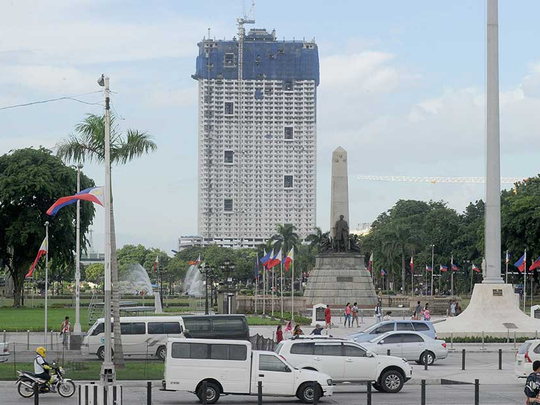
Manila: A high-rise condominium project that has outraged Philippine conservationists for allegedly ruining views of a national monument was stopped by the Supreme Court on Tuesday, officials said.
The 49-storey Torre de Manila development looms on the skyline behind the tomb and monument of national hero Jose Rizal, less than a kilometre (0.62 miles) away.
Still under construction and currently 30 storeys tall, it has been derided on social media as the “national photobomber”, in a nod to the monument’s status as one of the country’s most photographed vistas.
“Rizal is one of the foremost historical figures in the country. He must own the landscape,” said Trixie Angeles, head of the government’s National Commission on Culture and the Arts.
“If we consider him important, he must dominate the landscape. He is the symbol of the Filipino,” she said.
The court injunction takes effect immediately until the case is resolved, court clerk Theodore Te told reporters.
The developer and the project opponents were also ordered to present their arguments at a court hearing on June 30.
The Knights of Rizal, a group devoted to promoting the ideals of the national hero, lodged a suit in the Supreme Court last year in a bid to stop the project.
In a recent Facebook post, the group described the tower as a “rapacious alien monster” that overshadows the monument.
A spokesperson for developer DMCI declined to comment saying the company had not been furnished with a copy of the court’s decision.
Social media erupted in cheers after the court’s decision.
Twitter user @edrocksworld said the halt order was an “early birthday present” for Rizal, whose 154th birth anniversary is on Friday.
“It really ruins the view (of the monument) from any angle, unless you drape it with the Philippine flag,” @AkosiAgs said in a tweet.
Rizal campaigned for reforms under Spanish colonial rule and was jailed and later executed in 1896 by firing squad at the park that now holds his tomb and monument.
A Philippine revolution for independence against Spain erupted less than two years later, but the Asian islands were eventually ceded to the United States at the end of the Spanish-American War.
The US granted the Philippines independence in 1946 after World War II.
The Rizal park includes an outdoor stage where presidents of the mainly Catholic nation are sworn into office.
Pope Francis also held a mass there during a visit to Manila last January.
An economic turnaround and a growing middle class has fuelled a property boom in the Philippines, with developers rushing to build high-rise condominiums.












